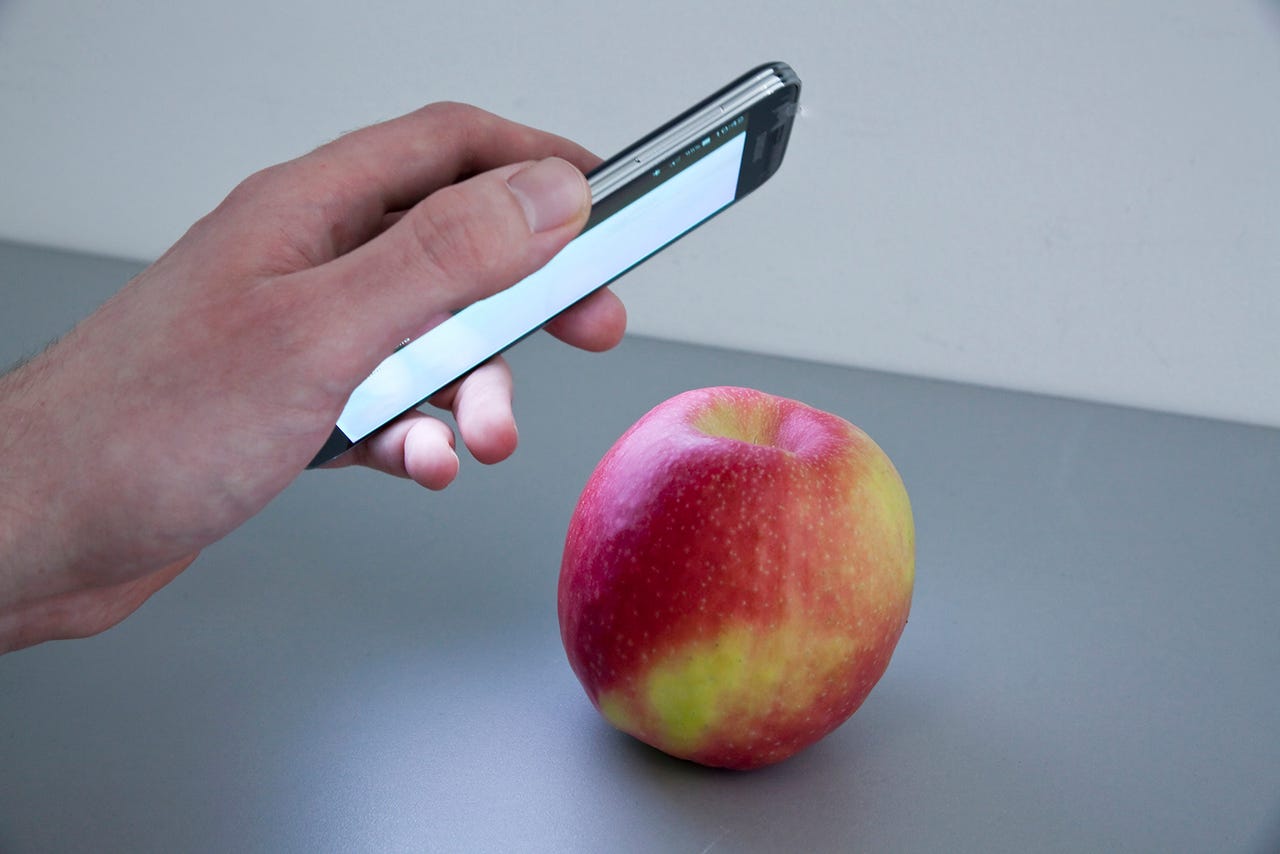Worried about your diet? This app lets your phone scan food for harmful chemicals


The phone's display acts as the light source, beaming colors at an object while the camera captures details about the reflected color.
The makers of an industrial hyperspectral camera called HawkSpex have created an app that lets you use your smartphone's existing camera and display to scan an object and see what's inside it.
German firm Fraunhofer Institute for Factory Operation hopes consumers will find its HawkSpex app useful for things such as testing for pesticides in fruit sold as organic or scanning cosmetics to tell whether they're authentic.
The company targets its existing industrial scanner at manufacturing processes, but it requires a special spectral camera to capture and analyze the light reflected from the surface of an object.
Knowing that certain spectrum ranges are associated with a substance allows the sensor, combined with software analysis, to generate a fingerprint for each substance.
The forthcoming consumer app, scheduled for release towards the end of 2017, can perform similar analyses with a smartphone's camera. This capability has been achieved by reversing the process it uses to acquire fingerprints using the spectral camera, according to professor Udo Seiffert of the Fraunhofer IFF.
"The [phone's] camera gives us a broadband three-channel sensor, that is, one that scans every wavelength and illuminates an object with different colored light," he said.
The phone's display acts as the light source, rapidly beaming a series of colors at an object while the camera captures details about the reflected color. An algorithm, optimized for the smartphone's hardware, performs an analysis of the object's chemical composition.
According to Fraunhofer IFF, the company has finished the first version of the app, but is holding off on a private beta until it's developed features to support scanning different objects.
If the app works as planned, Fraunhofer IFF may find it easier to distribute to consumers than similar technology in the recently announced H2 phone, which features a dedicated material sensor from Consumer Physics.
Consumer Physics has sold a handheld molecular scanner called SCiO for several years, but scaled it down to a sensor format small enough for smartphone. It will rely on third-party developed apps that are customized to analyze different objects.
In contrast, Fraunhofer IFF says it will be taking a "Wikipedia approach" to its app, allowing consumers to add support for different objects. Consumers would send data from each scan to Fraunhofer IFF, whose engineers would verify the measurements and then update the app.
"Once the app is launched on the market by the end of this year, active users will be able to contribute to the whole big thing and create new applications, for instance, that test pesticide exposure of heads of lettuce, by teaching the system such problems," Seiffert said.
Read more on mobile apps
- Outlook for iOS turns two: Nimble, Evernote, Smartsheet, and more join the celebration
- Samsung Pay Mini to launch for Android
- Apple's iOS 10.3 beta warning: Does it signal end for 32-bit apps in iOS 11?
- Google open sources Chrome for iOS code
- iPhone lock: Did hackers drive Apple to kill iCloud activation checker?